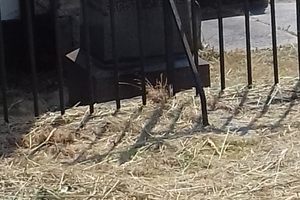About
In 1852, Isambard Kingdom Brunel, considered by many to be one of the greatest engineers of all time, designed a wooden trestle viaduct to carry the South Wales Railway and the Llanelli Railway across the estuary of the River Loughor near Swansea, Wales.
The viaduct was originally built to carry a dual-gauge track, as one of the railways operated on standard gauge and the other on Brunel's preferred wide-gauge track. The trestle initially had a wooden deck and a lifting section to allow ships to access the Loughor. Later modifications removed the lift and eventually replaced the wooden deck with steel beams. The eroded three-leg trestle supports were replaced with four-leg trestles in 1906, but the basic plan was still close to Brunel's initial design.
When a decision was made in 2013 to replace the viaduct with a one constructed of modern concrete, the old viaduct was demolished and the new one pushed into place with hydraulic jacks to make use of Brunel's original stone abutments, which are still in place. A single span of the 1909 steelwork and some of the original trestles (no longer taking a load) were also left in place for their historic value. In the riverbed, the below-surface remnants of Brunel's original three-leg trestles still remain and are, on occasions, exposed by scouring.
A short section of the original viaduct was also lifted from the riverbed and mounted, high and dry, at a strategic point near the main Swansea-Llanelli highway, where it is now a place of pilgrimage for fans of railway engineering. This Victorian remnant is in a protective compound between the road and the rail line it used to serve, and an information board in English and Welsh provides a full account of the history of the viaduct.
Related Tags
Know Before You Go
As you drive along the coast road from Swansea to Llanelli (A484) the preserved section of viaduct becomes easily visible as you cross the road bridge alongside the new viaduct. A handy pull-in gives a convenient place to park to see the retained structure. If the tide is low you can cross the road, go down a set of steps, and walk under the road bridge to get a closeup view of the stone abutment and the in-situ trestle legs. Be aware that this can involve walking through a little shallow mud.
Published
August 7, 2019


































